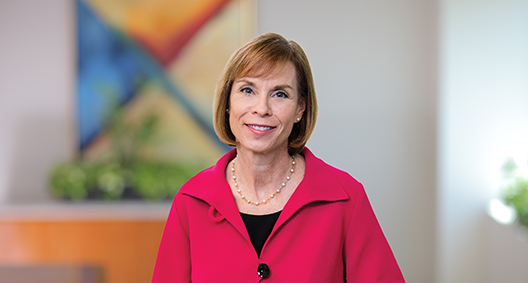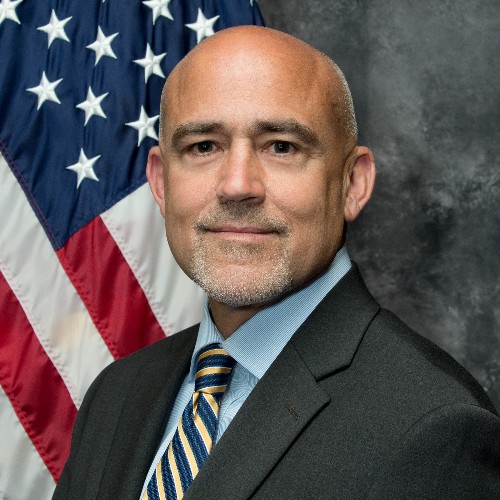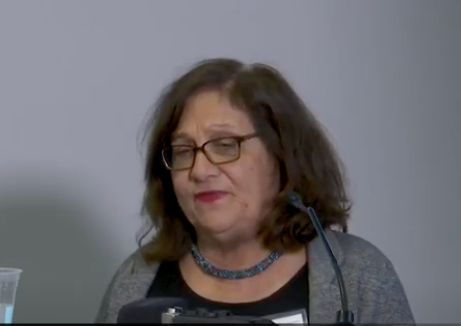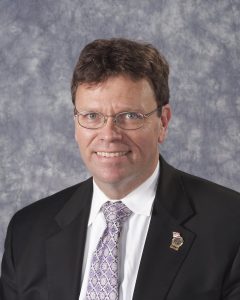S2E3 / The Rise of Fentanyl / Carole Rendon, Christopher Tersigni, Denise Paone, Thomas P. Gilson, Mark Kinzly
How has the rise of fentanyl led to a spike in drug overdose deaths? And why would anyone want to take or deal in such a deadly drug?
Note: This season of American Diagnosis was originally published under the title In Sickness & In Health.
This podcast was created by Just Human Productions. We’re powered and distributed by Simplecast. We’re supported, in part, by listeners like you.
Mark Kinzly: It’s easy to make, it’s easy to ship, you get more bang for the buck. I mean, it’s a perfect monetary-making drug,
Celine Gounder: Mark Kinzly has struggled with addiction since the seventies… and he’s been actively involved in helping other drug users since ‘89. He’s on the board of the National Harm Reduction Coalition, an organization that works to improve the health of people affected by drug use… however that might be. One of those ways is to track substances… to be aware of what users are using… and what drugs are out there.
Mark Kinzly: It’s in Iowa. It’s in the Dakotas. We’re seeing it in Texas in a huge way right now. You know it’s cheap, it’s easy to get. And it’s a huge moneymaker for whoever produces it. So it’s not going anywhere. Celine, not for a while.
Celine Gounder: On this episode of “In Sickness and in Health” we’re going to follow the path of an opioid far more potent than heroin. Fentanyl… it’s 50 to 100 times more powerful than morphine. In medicine, we sometimes use fentanyl as an anesthetic… say during surgery… or prescribe it in patch form for severe cancer-related pain. But I’ve known people to overdose from fentanyl patches… and that’s a controlled, FDA-approved form of the drug.
But the drug Mark Kinzly is talking about… the fentanyl you’d buy from a dealer… it’s manufactured and distributed uncontrolled. And now dealers also sell fentanyl analogues… like carfentanil… which differ from fentanyl by only minor chemical tweaks. These analogues are 10,000 times stronger than morphine… and were originally designed to anesthetize large animals like elephants. They’re so deadly that some at the Pentagon have worried they could be used as chemical weapons. But why would a drug dealer sell a deadly product that’s going to kill his customers?
Mark Kinzly: So drug users are no different than any any other consumers, right? It makes sense that if you’re someone who’s dependent on opioids that you — you’re gonna wanna get the best product for the amount of money that you spend, right? It’s no different than any other consumer of any other product. It’s what you do, Celine, it’s what I do. We do it with other products, right?
Celine Gounder: In other words… drug users are shopping for the best deal… it’s something we all do. It’s why we do so much of our shopping after Thanksgiving, heading out at the crack of dawn on Black Friday and surfing the web for the best deals on Cyber Monday. Let’s say you use drugs… and you hear that another drug user died from a certain batch of drugs. You figure that batch must have been really strong. It may sound counterintuitive, but if you use drugs, you might seek out that deadly batch because you want more value for your money.
Mark Kinzly: You know we do it with other products, right? And drug users do it with these drugs. Right? So it’s not like — people don’t go buy the drugs because it kills people, with the intention of it killing them. They go there with the intention that, they have a really good product that they’re gonna do differently than the person that died. Right? I’m gonna do less than than that person did and I’ll be OK. And sometimes that works, and sometimes it doesn’t.
Celine Gounder: Sound familiar? We all do this… we think we’re somehow different from other people… that we can take certain risks that others can’t… because we’re smarter or stronger or just, somehow, better. It’s OK if I smoke cigarettes… because I’ll be able to quit when I want to. It’s OK if I drink and drive because I’m in control… I’m a better driver than those other people are.
The business in street fentanyl and its analogues is booming… and it’s behind skyrocketing numbers of opioid overdose deaths across the country.
Mark Kinzly: Let’s hope that hundreds of thousands more lives don’t have to be, you know, lost as a result of it. But fentanyl is here because the United States has such an enormous appetite for opioids that in clandestine in laboratories all over the world, probably here in the United States, at this point, are producing clandestine fentanyl.
Celine Gounder: That enormous appetite for opioids… first it was for prescription drugs like Vicodin, Percocet and oxycodone… then street heroin… and then drugs like fentanyl.
Carole Rendon: We started to see in about 2015 synthetic opioids hitting the streets, first in the Cleveland area and then throughout the northern district of Ohio. And the first synthetic opioids that we saw were primarily fentanyl, and it was associated with a very large spike increase in the number of overdose deaths that we were seeing.
Celine Gounder: This is Carole Rendon. She’s the former US attorney for the Northern District of Ohio. The opioid overdose epidemic is one of the worst health and law enforcement crises she’s faced in her career. First it was heroin… then fentanyl and the fentanyl analogues came into the mix… adding fuel to the fire.
Carole Rendon: Which is dramatically more dangerous and more deadly than heroin. And over time not only did the amount of fentanyl that we were seeing on the streets and the number of people overdosing from fentanyl or a combination of heroin and fentanyl, not only did that increase, but then we started to see other analogues — fur-fentanyl, carfentanil — really incredibly dangerous drugs.
Celine Gounder: Carfentanil is one of those analogues that I mentioned earlier… 10,000 more powerful than morphine… and one of the most potent opioids in existence.
Carole Rendon: I mean, we started off with a problem with opioid overdoses that then morphed into a problem with heroin that morphed into a problem with fentanyl, and then carfentanil and fur-fentanyl now, and is now morphing into a problem of cocaine laced with fentanyl. So it is really a crisis that keeps evolving and that’s why the numbers of people overdosing keep increasing despite everybody’s efforts on all fronts.
Celine Gounder: One of the problems, Carole says, is that it can be difficult to identify these potent drugs as such. What you buy on the street isn’t FDA-approved, pharmaceutical grade stuff. Additional substances might be added to bulk, dilute or enhance the effects of the drug. Sometimes these drugs are contaminated during production or storage. Adulterants include everything from sugar… to bacteria or fungi… to other drugs. Customers don’t know what they’re buying.
Carole Rendon: I’ll give you one example. We had a case where an individual had overdosed and there were some pills that had been seized that were I believe in his pocket and they looked like Oxycontin. And so there was an initial assumption that he had overdosed on prescription pills. But the medical examiner’s office did their toxicology, and he had fentanyl in his system, and they were trying to figure out like what what what does that mean. He didn’t have any opioids in his system other than the synthetic fentanyl. And so they then tested these blue pills, and sure enough, they were not Oxycontin at all. They were fentanyl. And they had been pressed and dyed to look like Oxycontin and had been sold by a dealer as Oxycontin, and then the people who were taking them unbeknownst to them were actually taking fentanyl. And it was, you know, a rash of overdoses waiting to happen.
Celine Gounder: Around the same time, one of Carole’s colleagues was also witnessing a big jump in overdose deaths in his and surrounding counties.
Thomas Gilson: My name is Dr. Thomas P. Gilson, I am the medical examiner for Cuyahoga County, which is Cleveland, Ohio, and I am also the executive director of the crime laboratory for Cuyahoga County as well.
Celine Gounder: Suddenly, Thomas was seeing a lot of people who’d died with fentanyl in their system.
Thomas Gilson: … the unfortunate thing about fentanyl is when it shows up in a community, it tends to have very, very dramatic effects. It’s a very potent narcotic. And you know lots of people die when you have any fentanyl outbreak.
What we saw at the end of 2014, though, was we started to see a pretty steep rise in our fentanyl deaths, so that we finished out that year with 37 total. Then in 2015 we had almost a tripling of our fentanyl deaths and then things really took off crazy last year when we went from 92 up to 399 deaths in a year.
Celine Gounder: What Thomas and his law enforcement colleagues were witnessing was an outbreak of fentanyl overdose deaths… but it’s hard to control an outbreak if you can’t trace it back to the source… and in this case… there didn’t seem to be any one source. And that’s because there were in fact many sources… the market had become a lot more diffuse.
It used to be that the fentanyl you’d buy on the street… was the prescription drug. But fentanyl… and its analogues… are synthetic drugs. They’re a lot easier to manufacture… and they are manufactured… created in labs. Morphine, codeine and heroin… these drugs are natural products… made from plants. But synthetic opioids… like oxycodone, hydrocodone… and fentanyl… they’re made… they’re synthesized… in a lab… in many labs.
Thomas says he’s identified 20-25 variations of fentanyl in his lab… and because these are synthetic drugs, you can make lots quickly and cheaply… which makes economic sense, especially when you’re trying to expand your customer base.
Thomas Gilson: Fentanyl itself has become you know incredibly inexpensive because fentanyl’s a laboratory product. It doesn’t have a growing season like cocaine or heroin do. You don’t have to grow coca leaves or poppies, you just go into the lab with the appropriate chemicals and you can generate fentanyl. So partly maybe as an economic issue with a cutting agent, partly to reach into a new market. I think a lot of things could be in play there. But I do think that some of this clearly was to tap into a market that has pretty much stayed outside of the opioid crisis and the illicit narcotic trade.
Celine Gounder: There’s something else about fentanyl that makes it desirable in the illicit drug trade. It can be hard to trace… with so many different variations… but with effects and appearance that mimic existing drugs on the market… so fentanyl and its analogues can evade detection. But… that means that someone could be overdosing on this opioid… and a medical professional could miss it.
Thomas Gilson: If you were to go to an emergency room with what looks like a narcotic overdose, it’s very possible that the drug screen that the hospital would do wouldn’t have fentanyl in the battery of tests they’re looking at. You know, that was a problem that we encountered. We’ve tried to get the word back to our hospital or health care delivery systems in Cleveland, but a lot of them just didn’t have it to detect. And initially when heroin was the bigger problem their dipstick, you know, for urine to detect an overdose would have a positive for heroin if it was under the opiate panel. But it would be negative for fentanyl, because even though fentanyl was an opioid type drug, it’s present at such lower concentrations it doesn’t trip the screening test to see it. So not infrequently, you’d have people reported to our office as a suspected overdose. They’d make it to the hospital and they’d have a negative toxicology screen. And then we’d be like, oh, wonder what happened? And then as we did our testing, which is more extensive than a specimen collected after death, then we would see the fentanyl.
Celine Gounder: The drug screens doctors order don’t typically include fentanyl… doctors have to think of fentanyl and order testing for that separately. So, even when a county is experiencing a fentanyl problem, they may not know it. Thomas says that when he saw a big spike in fentanyl overdose deaths in 2016, there was another disconcerting factor.
Thomas Gilson: And what we were starting to see then is no single distribution source, no geographical pattern. And that was a big warning flag to us that the game was looking like it was changing in that there were going to be multiple distributors, and that was comparable to heroin, and that there were a lot of low level street dealers dealing heroin before that. And as fentanyl entered the drug market, same, you know, distribution chain that started to be much more diffusely spread across our county.
Celine Gounder: Here’s Carole again, who, as U.S. attorney, often depended on Thomas’ work as a medical examiner. She says that the absence of a discernable pattern, that surge in the supply of the drug from all directions… is due to international markets capitalizing on the cheap-to-make and in-demand substance.
Carole Rendon: So the synthetic opioids that we see in the northern district of Ohio come in from a couple of different places. Not surprisingly, the Mexican drug cartels have started producing and distributing large quantities of synthetic opioids, primarily fentanyl, across the southwest border and through the normal routes that they use to bring illegal drugs into the United States. One of the both blessings and curses of the state of Ohio is that we have the seventh largest highway system in the United States. And so we’re really at a crossroads. And so historically, and this is also true with synthetic opioids like fentanyl, drugs come in across the southwest border and they come up north through the highway system.
Celine Gounder: And with fentanyl, Carole says, it isn’t just the domestic, highway-trafficked drug supply that you have to worry about.
Carole Rendon: We also started to see fentanyl in particular, and then carfentanil and fur-fentanyl, coming in directly from China. And we discovered that people were actually ordering these drugs on the Internet and having them delivered directly to their homes or other drop off locations from China. So it was like you could get online, order fentanyl and have death delivered to your front door. And so that’s an entirely new and different pipeline for these drugs coming into our district that has been very challenging for law enforcement to address.
Celine Gounder: Why China? Until recently… when the Chinese government began to recognize that this deadly drug was being produced in large quantities and shipped out of the country… there was no penalty for manufacturing or distributing fentanyl and many of its analogues in China.
Carole Rendon: And as a result there was no risk to anybody in a lab in China creating fentanyl and sending it someplace else. It wasn’t a crime there.
Christopher Tersigni: But it’s tough. The other part is that the various analogs, you know China’s been good about, like, carfentanil, I think was a recent one that was just, you know, made illegal in China. So they are helping us with those things.
Celine Gounder: This is Christopher Tersigni, an Assistant Special Agent at the DEA. Like Carole, he’s had experience tracing fentanyl overseas… and credits China with making the substance illegal to manufacture… but, he says, it isn’t as simple as outlawing the compound.
Christopher Tersigni: But then you have these nefarious actors in China, in these laboratories who just change a compound and then all of a sudden now it’s not it’s not illegal anymore.
Celine Gounder: China, Christopher says, is at the top when it comes to producing and distributing fentanyl and its analogues. And it isn’t just individual drug users or dealers in the U.S. who are mail-ordering the drug.
Christopher Tersigni: What we’re seeing is these Mexican cartels now they see the profit potential in this. So they are getting very much involved in this right now. So they’re getting, they’re buying fentanyl in bulk, and because they are responsible for probably 85 to 90 percent of the heroin we see in the United States, they’re beginning to lace that heroin with the fentanyl because, again, by cutting it with this fentanyl, it means they need that less more heroin. And but yet they still have a very potent product. And, but you’re going to see that much like they’ve taken over pretty much, you know, a lot of the drug trafficking activities here in the United States, they’re gonna be taking over this as well.
Celine Gounder: Some drug users, though, are being deceived and taken advantage of in a particularly horrifying and deadly way.
Christopher Tersigni: People are still trying to purchase Percocets and Vicodins and things like that on the street. Unfortunately, you have these dealers now that know that people are doing that and they’re trying to capitalize on the fact that you know there is still a market on that. And then they are actually mixed mixing, pressing their own pills that are fentanyl-laced. And unfortunately, we have these unsuspecting, unwitting people that are now purchasing that, taking that. They have no idea what they are taking. And unfortunately it’s leading to overdoses, and in some instances deaths.
Celine Gounder: But what are these dealers thinking? It doesn’t make sense to kill your customers… you’re not going to make a lot of money in the long run doing that.
Well… for one thing… prescription opioids like Percocet and Oxycontin are a lot less readily available. Doctors have become a lot more careful about prescribing them. New restrictions and regulations have come into effect. So fewer of these prescription opioid pills are getting diverted into the street market.
And… fentanyl… is cheap, readily available, and… because it’s so potent… a little goes a long way. Smugglers don’t have to transport bricks of the stuff… small envelopes of fentanyl can even be dropped in the mail… so the costs of doing business are lower… drugs are less likely to be intercepted… smugglers and dealers are less likely to get caught, to be incarcerated. The cost of doing business, in the case of fentanyl, falls more heavily on the consumer…. Because fentanyl is so much more likely to kill a user… especially a user who’s not aware he or she is taking fentanyl.
Christopher Tersigni: I’m still trying to figure that one out for myself. I mean if I was a drug dealer, I’d want my clients to be there all the time. I wouldn’t want anybody to be dying because there goes a customer. But then they’re also they’re in competition with one another and they want to put out a product where the word gets out on the street that they have the most potent or the most intense high product out there. You know in order to increase their sales. So there’s that fine line.
Celine Gounder: Christopher’s best guess is that these dealers just don’t know how to use fentanyl yet… they want to hold on to their clients. They don’t want to kill their clients. But dealers aren’t chemists.
These factors… the price… the production potential… the multinational market… the legal loopholes… the potency… the difficulty with detection… make fentanyl and its analogues especially dangerous.
Christopher doesn’t think we can’t arrest our way out of this problem… meaning law enforcement can’t go it alone… it’s too complicated of a problem… and that recognition… that this drug overdose epidemic can’t be solved with “just say no”… with putting people behind bars… it’s changing the way that even the DEA thinks about drugs.
Christopher Tersigni: I mean, we know with the Drug Enforcement Administration […] we’ve made a part of our overall mission and strategy to demand reduction and prevention. So you know, it’s not just about going out there and just you know doing the whole “just say no.” You know those things are good and they’re important, we’ve got to continue to do those things, the red ribbon campaign… But we’re getting more involved in community outreach efforts where which, we’re now sitting down at the table with doctors and pharmacists and insurance providers and mental health and departments of health, and we sit down with prevention folks and treatment folks, and we’re all coming together now, sitting at the same table, all the stakeholders coming in there together, and better understanding each other’s positions, and understanding each other’s resources, and having discussions on how we best educate, you know, the public about these dangers. So we we have to have that continued collaboration, cooperation, and coordination.
Celine Gounder: Moving away from putting all the blame on drug users… moving towards education… education of prospective Good Samaritans… and especially education for drug users themselves… that’s something that could potentially make a dent even in something as insidious as fentanyl.
Dr. Denise Paone is the Senior Director of Research and Surveillance at the Bureau of Alcohol and Drug Use Prevention, Care and Treatment at the New York City Department of Health and Mental Hygiene. Yes, it’s a mouthful of a title… but it means that she’s got her finger on the pulse of drug use and drug markets in New York City. But Denise knows when she needs to turn to others for their expertise.
Denise Paone: So there’s a lot about the market that we don’t know. I mean, we are planning to soon to start a study interviewing people who use drugs in New York City to see how they’re adapting to this fentanyl market.
Celine Gounder: Remember Mark Kinzly, from the beginning of this episode? The former drug user who’s now doing what he can to protect the health and lives of other users?
Mark Kinzly: … at some point people are going to learn to navigate around this. Drug users are not stupid, they’re very very intelligent people. They may not do some of the smarter things that we consider in society but they’ll figure this out.
Celine Gounder: Denise understands this… so she and her team are going to the frontlines… it’s a two-way conversation… they’re asking users how they’re protecting themselves… and they’re sharing tried-and-tested strategies with users and their loved ones. Their goal is to prevent drug overdoses.
Denise Paone: Our messaging on this right now is almost like universal precautions. Assume that the drug is cut with fentanyl, and we’ve been messaging. We did some flyering to the general public, as well as a lot of intense education and messaging at syringe exchange programs, and we have like five key messages to people who use: Do not use alone. Test the drug before using: do a little bit. Take turns, which is a new message. So if you’re using with another drug user, don’t get off on the same time because of its potency and quick action. Therefore have naloxone available. And avoid mixing drugs.
Celine Gounder: In essence, Denise and her colleagues are encouraging drug users to test small doses of their drugs on themselves… to assess the potency… before using the whole lot. To have a buddy system in case something goes wrong… And not to mix drugs… which is at the root of so many deaths from drug overdose.
Faced with a problem as daunting as the rise of fentanyl and its analogues, people like Denise are taking a pragmatic approach… they acknowledge the drugs are out there and that people are using them… they’re just trying to do what they can to prevent overdoses… to prevent deaths.
Denise Paone: … there are some syringe exchange programs that are using fentanyl test strips that actually were developed to test urine. So they’re being used off-label to test products before people inject their drugs or snort their drugs. [00:09:45] So that is actually going on in a few syringe exchange programs here in New York City and I think a few other places across the country. And they’re using them up in Vancouver in InSite, at the safe injection facility.
Celine Gounder: The problem, Denise says, is that these fentanyl test strips… they aren’t yet ready for primetime… it isn’t clear if used in this way, they’ll always detect fentanyl in a batch of drugs… or if they’ll pick up all the analogues.
Our next episode will take us to the Netherlands… where health officials have found that by testing drugs… and letting people know what’s in them… they’ve been able to save lives. And we’ll come back to New York… to learn what some users are doing… to take the matter into their own hands.
If you use drugs… or know someone who does… one of the most important things you can do to prevent an overdose is to carry naloxone, also known as Narcan or Evzio. You can get naloxone from your local pharmacist without a prescription. … Or go to getnaloxonenow.org, that’s getnaloxonenow.org. Or contact your local health department, drug treatment or syringe exchange program.
Be aware that if someone has taken fentanyl, they made need multiple doses of naloxone… as well as rescue breaths or mouth-to-mouth.
Today’s episode of “In Sickness and in Health” was produced by Hannah McCarthy and me. Our theme music is by Allan Vest. You can learn more about this podcast and how to engage with us on social media at insicknessandinhealthpodcast.com, that’s insicknessandinhealthpodcast.com.
If you or a loved one needs help, you can reach out anonymously and confidentially to SAMHSA’s National Helpline at 1-800-662-HELP, that’s 800-662-4357. SAMHSA stands for Substance Abuse and Mental Health Services Administration. You can also find information online at www.findtreatment.samhsa.gov, that’s www.findtreatment.samhsa.gov.
I’m Dr. Celine Gounder. This is “In Sickness and in Health.”









